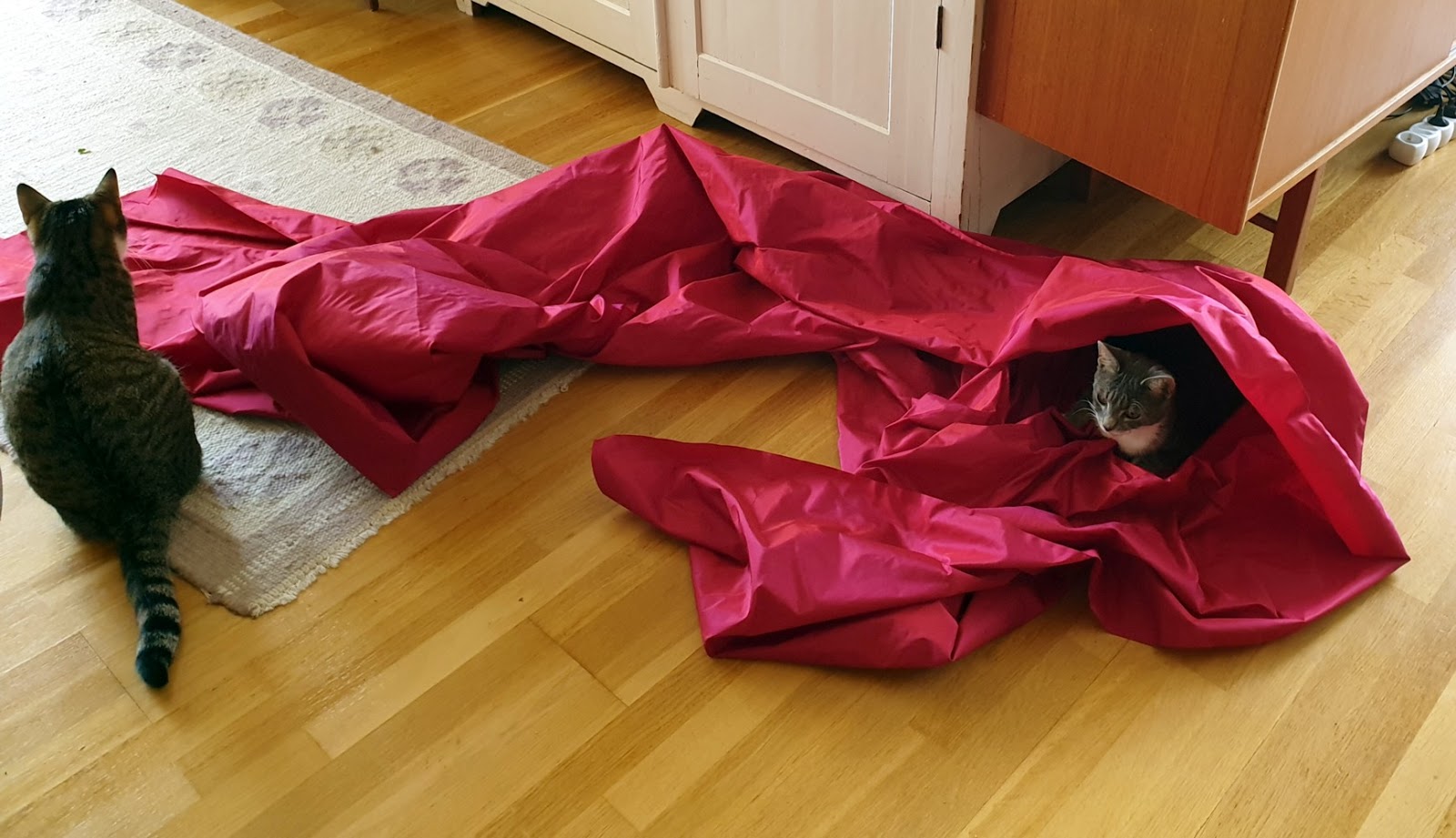The tale of the Mantle
Jul. 18th, 2019 07:52 amMy presentation at the IMC was about clothing and textiles in six courtly romances translated to Norwegian and Swedish in the early to mid-13th and early 14th century respectively. One of these, the so-called Möttuls saga was probably based on the Old French Le Cort Mantel, and was adapted into Old Norse by a cleric known as Brother Robert, probably of Anglo-Norman origin, for King Haakon IV of Norway (1217–1263).
The Norse text can be found in its entirety here.
The tale is about a wondrous cloak which tests the fidelity and virtue of the woman who wears it, and the story in the Norse version is rather comic and somewhat bawdy. The cloak is very beautiful; made from red silk and is gold embroidered all over with leaves. it is held together with cloak ties and if the woman wearing it is virtuous, it should reach all the way to the floor. A man brings the cloak to the court of King Arthur and demands that all women at court should try it on.
Unsurprisingly all but one of the women at King Arthur's court fall short in this test; the cloak is eithr too short or too long, and often both at the same time, indicating, according to the tale, in which position the woman had been unfaithful.
So much about the story, but when I worked with this material I felt a very strong urge to have such a cloak, though without the magic. Silk cloaks are not unheard of in medieval Scandinavia, I found three in Norwegian wills when I did my PhD dissertation:
* One, from 1349, is made from blue silk and has skillmala, an unidentified type of ornament.
* One, from 1353, has no mention of colour, but was lined with ermine and edged with sable and also had lade, a word that means woven or embroidered trim.
* The latest one, from 1366 was green, lined and edged with ermine and had gold ornaments, These were probably cloak clasps, since bezants, the metal ornaments so common in medieval fashion were usually silver or gilt silver.
Cloaks from this period were semi-circular - one such cloak was found during excavations in the church of Leksand in Sweden. The cloak, which is dated to the 12th or 13th century, was made from a diamond twill wool and had a border of woven trim along the straight edge of the semi-circle. This cloak was probably long enough to reach to the wearer’s feet in the back. Marc Carlson has a page about it, which shows an estimation of the cut, and more information can be found in Margareta Nockert's article ’Textilfynden’, in Tusen år på Kyrkudden, red. Birgitta Dandanell, Falun 1982.
As I wrote in my last post I looked around for reasonably priced silk when I was in London, but I didn't find any in a colour I liked. However, this week I passed the town of Borås, known for its textile trade, on my way to a friend's 50th birthday celebration, and there, at a shop called Furulunds, I found a gorgeous raspbetty red silk. The photo does NOT make it justice.


no subject
Date: 2019-07-18 05:42 pm (UTC)Teddy
no subject
Date: 2019-07-18 09:12 pm (UTC)/Eva
no subject
Date: 2019-07-19 05:14 am (UTC)no subject
Date: 2019-07-19 08:17 am (UTC)/Eva